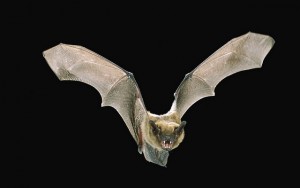
Bats are thought of as warm weather creatures, but recent studies have shown that they can be active throughout the winter. Here in the Puget Sound region, bat echolocations have been recorded in temperatures in the low teens, and are commonly heard during more mild conditions.
Very little is known about bat behavior during the winter, but some species like the Big Brown Bat and Western Small-footed Myotis are known to venture out in search of water and may even be foraging during portions of the winter as well.
Biologists are monitoring bats in the Pacific Northwest to increase their understanding of both winter and summer roosts, and baseline activities during typical hibernation periods. They hope to understand the health of regional bat populations and assess potential threats such as white-nose syndrome. That disease has not yet reached Washington, but is devastating bat populations across North America.
Listen to recordings of winter bat echolocations near Olympia in south Puget Sound, along with a short interview with bat expert Greg Falxa of the Cascadia Research Collective: